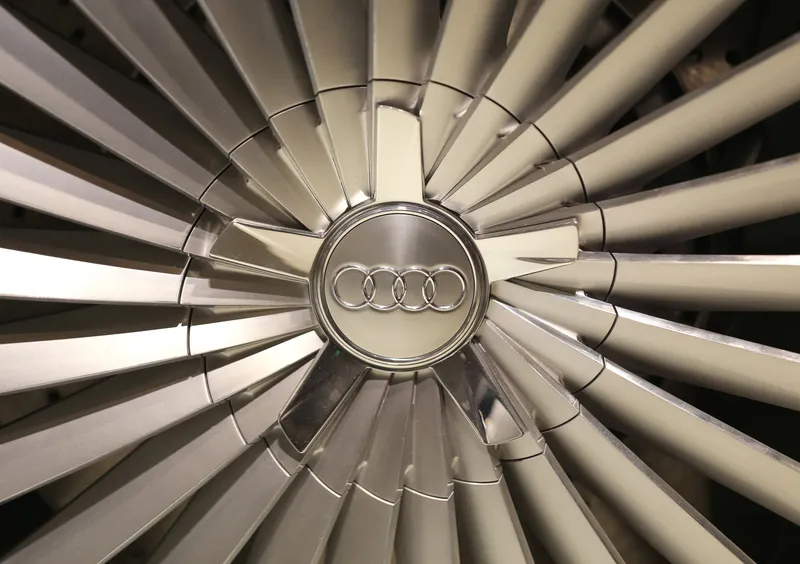Testifying on the future of surface transportation before the US House Committee on Science, Space and Technology’s Subcommittee on Research and Technology, Toyota vice president Kristen Tabar, from the Toyota Technical Centre said Toyota is leading the way to ensure the next generation of vehicle communication brings the highest levels of safety, quality, and convenience to consumers. As cars become more connected to each other and the world around them, a new set of benefits and challenges have emerged.
June 20, 2014
Read time: 3 mins
Testifying on the future of surface transportation before the US House Committee on Science, Space and Technology’s Subcommittee on Research and Technology, 1686 Toyota vice president Kristen Tabar, from the Toyota Technical Centre said Toyota is leading the way to ensure the next generation of vehicle communication brings the highest levels of safety, quality, and convenience to consumers.
As cars become more connected to each other and the world around them, a new set of benefits and challenges have emerged.
“The automobile is currently undergoing a technological transformation that is reducing crashes, improving fuel efficiency, and bringing greater convenience and improved quality of life to drivers and passengers,” said Tabar. She noted that much of the transformation to come will be based on increasing the level of connectivity in vehicles.
“We have no doubt that the technology will save lives, improve the environment, create jobs and help the U.S. maintain technical leadership in a field that will be an important contributor to economic growth in the future,” she said.
However, she outlined several technical and policy challenges that Congress and the Federal government needed to address, including most notably, dedicated short-range communication.
Tabar said lawmakers should preserve and protect the short to medium-range wireless spectrum necessary for V2V and V2I to function properly, which is being threatened by interference from unlicensed devices.
"For the auto industry and those who have been involved in the development of this technology, the use of the spectrum allocated for V2V and V2I communication by unlicensed devices raises significant, and possibly insurmountable, concerns about the potential for harmful interference" Tabar said.
She also noted that it would be unfortunate if the US had to shut the door on V2I communication technology because of a lack of intelligent infrastructure investment. “Congress and US Department of Transportation should be looking at ways to incentivize or facilitate the build out of infrastructure to support V2I communication,” she said.
She cited Japan’s strong commitment to infrastructure investment as one of the major reasons Toyota began commercialization of V2I in that country.
New connected vehicle technology also raises security and privacy concerns. “The truth is that the success of the technology is in large part dependent on public acceptance, and public acceptance requires that the network be adequately secure and that the privacy of drivers and passengers be preserved,” she said.
Because of those concerns, Tabar said that as Toyota begins the very early stages of commercial deployment of new V2V and V2I technology, the company does not anticipate full integration of the communication system and electronic control elements of the vehicle in order to limit ramifications of a potential cyber incident.
As systems become more integrated, security will become an undeniably critical element. “The good news is that the connected vehicle system is being developed to support the security that is required and to minimize the potential for hacking,” she said.
It would be tragic if uninformed and exaggerated concerns about security and privacy ended up chilling the further development of this transformational technology that will save lives.
Finally, she advised the subcommittee to devote more research and development into autonomous driving technologies, including how V2V and V2I communication technology can be leveraged effectively to support automated driving.
As cars become more connected to each other and the world around them, a new set of benefits and challenges have emerged.
“The automobile is currently undergoing a technological transformation that is reducing crashes, improving fuel efficiency, and bringing greater convenience and improved quality of life to drivers and passengers,” said Tabar. She noted that much of the transformation to come will be based on increasing the level of connectivity in vehicles.
“We have no doubt that the technology will save lives, improve the environment, create jobs and help the U.S. maintain technical leadership in a field that will be an important contributor to economic growth in the future,” she said.
However, she outlined several technical and policy challenges that Congress and the Federal government needed to address, including most notably, dedicated short-range communication.
Tabar said lawmakers should preserve and protect the short to medium-range wireless spectrum necessary for V2V and V2I to function properly, which is being threatened by interference from unlicensed devices.
"For the auto industry and those who have been involved in the development of this technology, the use of the spectrum allocated for V2V and V2I communication by unlicensed devices raises significant, and possibly insurmountable, concerns about the potential for harmful interference" Tabar said.
She also noted that it would be unfortunate if the US had to shut the door on V2I communication technology because of a lack of intelligent infrastructure investment. “Congress and US Department of Transportation should be looking at ways to incentivize or facilitate the build out of infrastructure to support V2I communication,” she said.
She cited Japan’s strong commitment to infrastructure investment as one of the major reasons Toyota began commercialization of V2I in that country.
New connected vehicle technology also raises security and privacy concerns. “The truth is that the success of the technology is in large part dependent on public acceptance, and public acceptance requires that the network be adequately secure and that the privacy of drivers and passengers be preserved,” she said.
Because of those concerns, Tabar said that as Toyota begins the very early stages of commercial deployment of new V2V and V2I technology, the company does not anticipate full integration of the communication system and electronic control elements of the vehicle in order to limit ramifications of a potential cyber incident.
As systems become more integrated, security will become an undeniably critical element. “The good news is that the connected vehicle system is being developed to support the security that is required and to minimize the potential for hacking,” she said.
It would be tragic if uninformed and exaggerated concerns about security and privacy ended up chilling the further development of this transformational technology that will save lives.
Finally, she advised the subcommittee to devote more research and development into autonomous driving technologies, including how V2V and V2I communication technology can be leveraged effectively to support automated driving.








